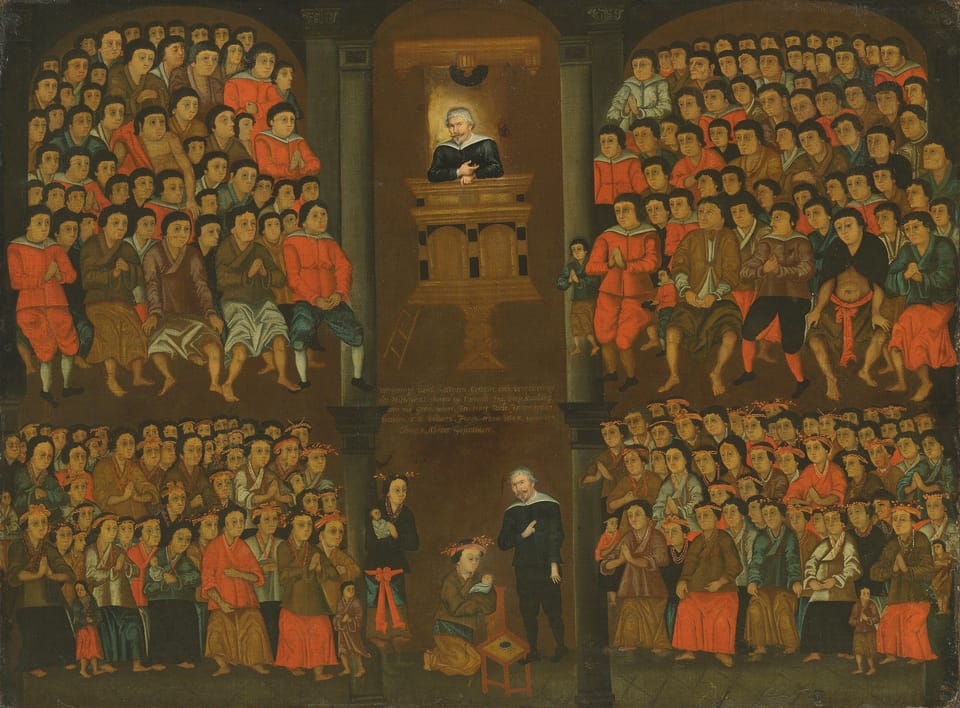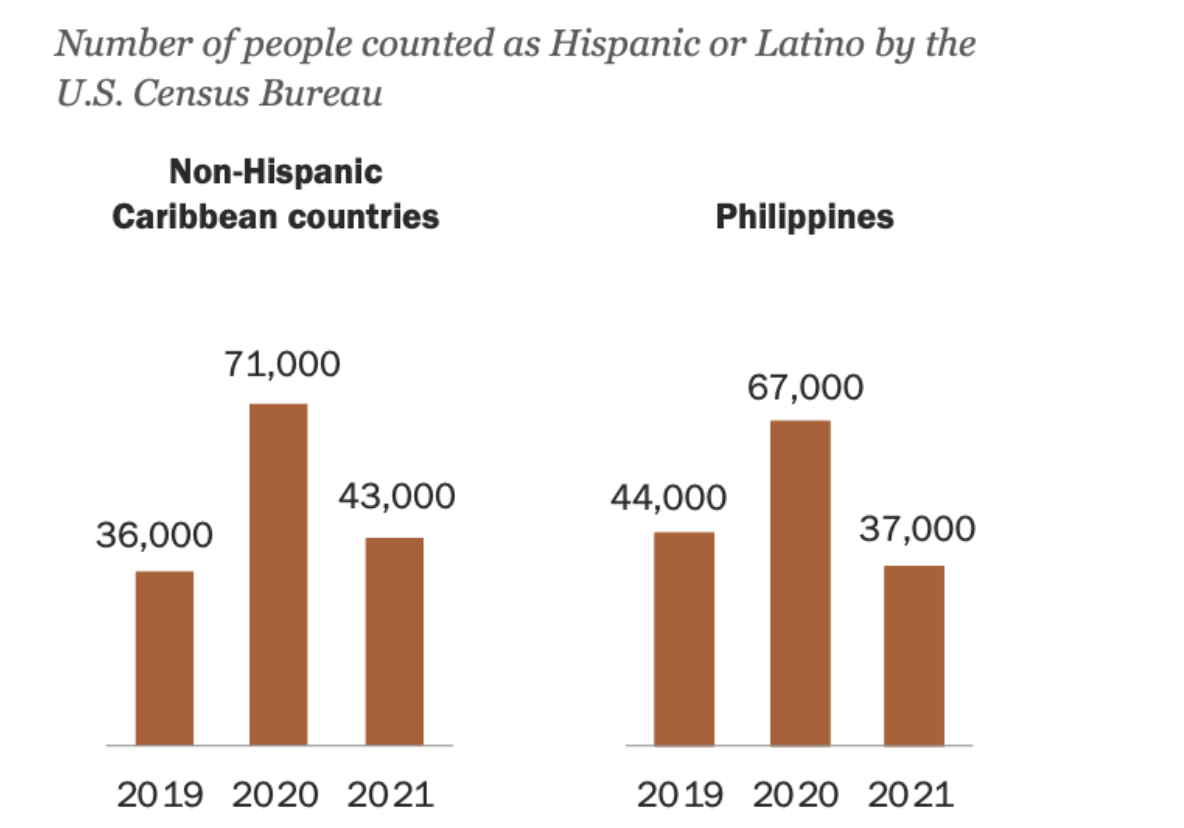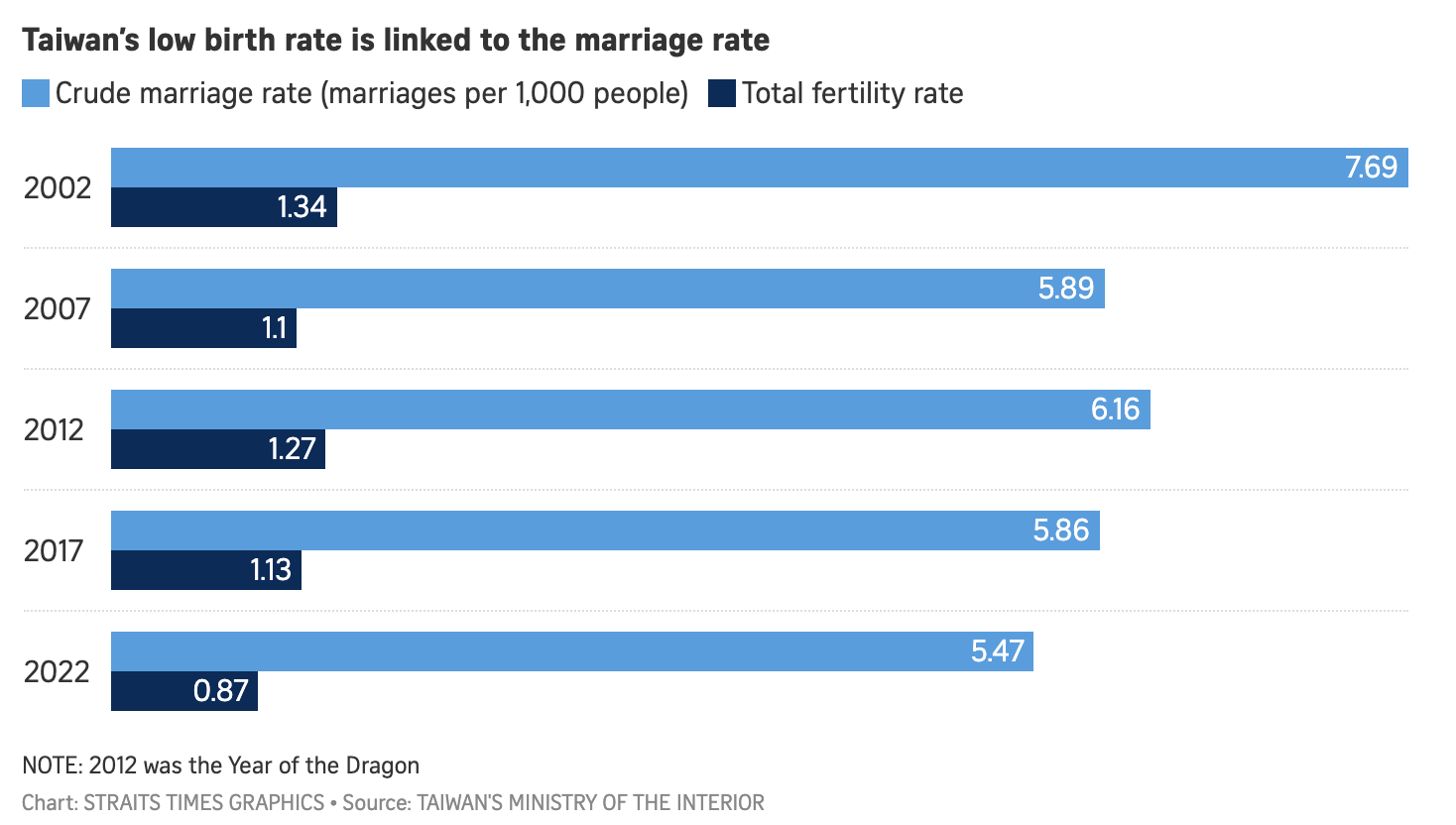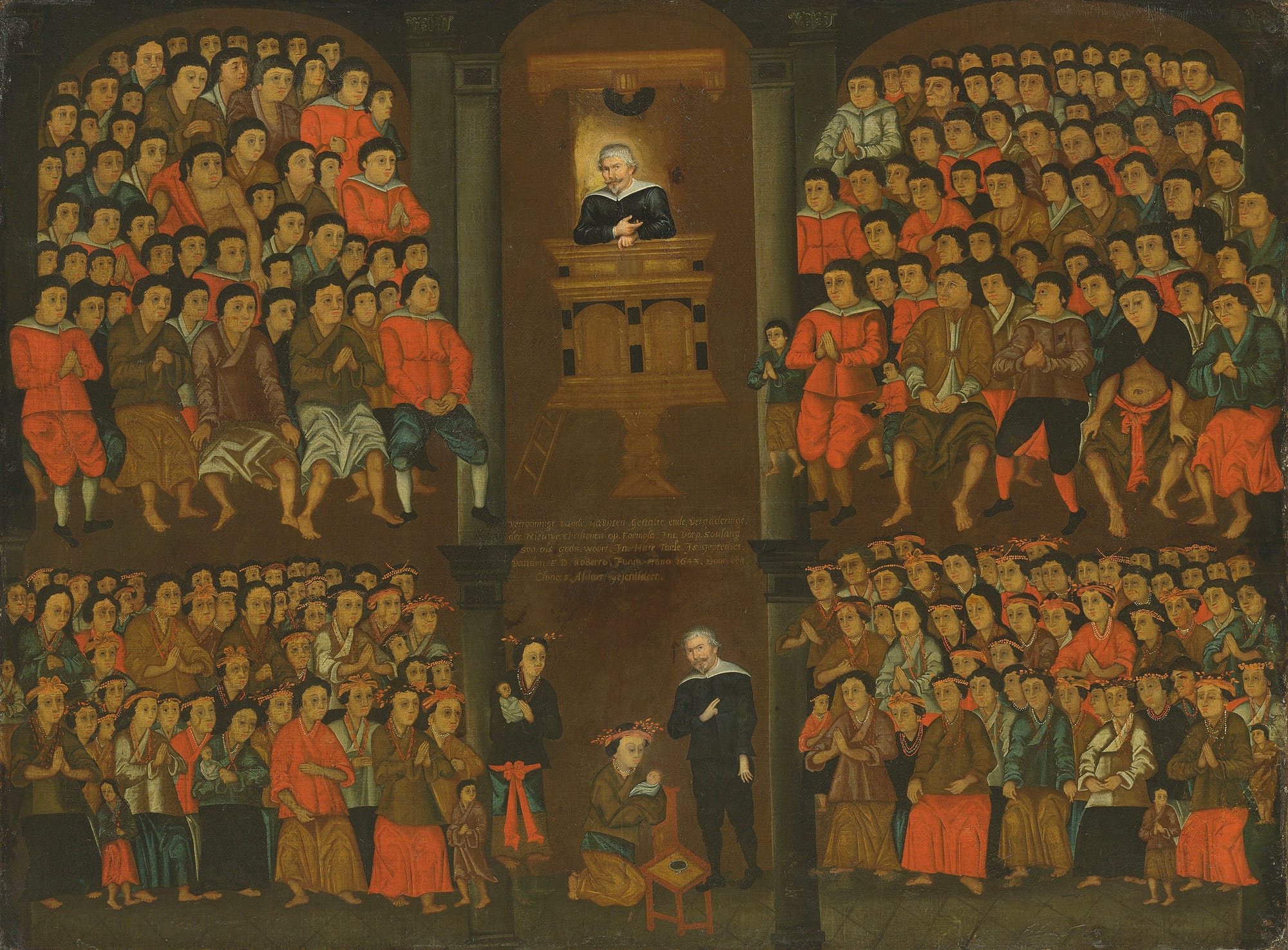Kerim’s Triptych for Sunday, February 18th, 2024

Welcome to Kerim's Triptych, a free newsletter that delivers 3 items to your email inbox, 3 times a month. If you didn't intend to subscribe, or you don't want to receive these anymore, there is an unsubscribe link at the bottom.
Item 1: Hispanic identity among Brazilians and Filipinos

The category of Hispanic, (or Latino/Latinx) is a complicated one in the US. Is it simultaneously linguistic, geographic, ethnic, cultural, or some shifting combination of each of the above. This article from Pew Research shows how people's self identification as Hispanic is often at odds with official records. That's because the Census Bureau usually recategorizes people who don't fit the official definition. In other words, someone marks themselves as "Hispanic" on the census, and the bureau then overrules their personal preference.
This means that Brazilians, Filipinos, as well as a number of people of Caribbean-origin, who check themselves off as "Hispanic" usually get reclassified before the numbers are released. However, in 2020 they didn't to do this due to some glitch, and this glitch reveals a lot about how people actually self-identify. In terms of total numbers it barely changed the totals (because there are so many Hispanics in the US), but it still gives us a fascinating look at the complexity of identity.
(NOTE: Taiwanese have been lobbying for the census to give them a separate box besides "Chinese" or "other Asian," often writing in "Taiwanese" by hand.)
Item 2: It's the patriarchy, stupid

Over a decade ago I read of a study which found that economic incentives to have kids only worked in countries where gender norms around child rearing and household labor were more equitable. But Taiwan's government continues to try to throw money at the problem without doing anything about such gender norms. So I was happy to see this article in The Straits Times which not only made this point, but also added some interesting data points I wasn't aware of:
For one thing, I had always been under the impression that Taiwan's female labor force participation rates were higher than Japan or South Korea, but it seems that isn't the case. Taiwan's is only 51.5%, while those countries are at 53.5%! ("The global average is 52.9 per cent, according to the World Bank.") The big difference seems to be that women in their late thirties are more likely to work in Japan and South Korea. This is actually the opposite of what I thought the trend was, and I'm going to have to look into this further. (Please email me if you have any insight into this!)
The other interesting point was that most married couples in Taiwan actually do have children, "with more than 70 per cent of them having two or more.” It is just that Taiwanese aren't getting married. High housing prices are part of the reason for this, but it is here that traditional gender norms seem to be particularly important.
Item 3: Junius baptising the new Christians

This painting, “Junius Baptising the New Christians (Aboriginal Taiwanese) at Formosa,” is on display at at the National Museum of Taiwan History in Tainan as part of the exhibition “Transcending 1624 – Taiwan and the World.” I don't know if I'll be able to go see it in person before the exhibit goes down this summer, but it is a remarkable work.
The following notesare from Christies auction house:
Robert Junius, born in Rotterdam in 1606, was a prominent missionary of the Dutch Reformed Church in Formosa (present day Taiwan) between the years 1629-43. The Dutch Reformed Church was the largest of the Christian denominations in the Netherlands from the onset of the Protestant Reformation in the early 16th century until the 1930s, and Formosa, from 1624-62, was under the colonial rule of the Dutch East India Company. Junius, who had previously been a minister in Delft, was one of the longest-serving missionaries on the island during this era.
Junius’s principal endeavour there was to introduce and promote Dutch Reformed Christianity to its pagan inhabitants, an enterprise which was significantly advanced in the wake of the Dutch Pacification Campaign of 1635-6. Following a massacre of sixty Dutch people by the Taiwanese aborigines in the district of Mattau (today known as Madou), Junius was involved in a series of successful military and diplomatic actions undertaken by Dutch colonial authorities against the native people, resulting in a Pax Hollandica. Over his years there, Junius established churches in at least twenty-nine towns, baptised nearly six thousand adults as well as numerous children, and translated many prayers and psalms into the Formosan language. He also instituted the island’s first schools, selected and trained around fifty natives to become teachers, and taught many of them to read. He returned to the Netherlands in 1643, and died of the plague in Amsterdam twelve years later.
This magnificent and unusual picture depicts Junius baptising hundreds of natives in mid seventieth-century Formosa and is a very rare and early image illustrating the activities of the West in Asia. Junius, in clerical dress and looking directly at the viewer, appears twice: in the throes of Christian teaching from a pulpit in the upper centre, and in the midst of a baptism ceremony in the lower centre. In this second scene, a kneeling mother proffers her swaddled infant while Junius signals the Christian blessing with his right hand across his chest. A small container of holy water sits atop the nearby chair and another woman holding her child patiently waits her turn. The men and women are designated to separate areas in the church, with many of the latter wearing identical beaded headdresses and necklaces. The sense of the ecclesiastical is heighted in the praying members of the congregation, the church-like stone columns, and the spiritual golden glow emanating from Junius at the pulpit.
Endnote
Enjoying Triptych? Please consider writing a short blurb to help me promote the newsletter. I've created a short form to collect these here.
While Triptych will always remain free — and free of advertising or invasive user-tracking code — seeing my readership grow really motivates me to keep going. Please help by encouraging your friends to subscribe. You can also show your appreciation by switching to a paid account. A big shout out to my current paid subscribers! Thank you.

Member discussion